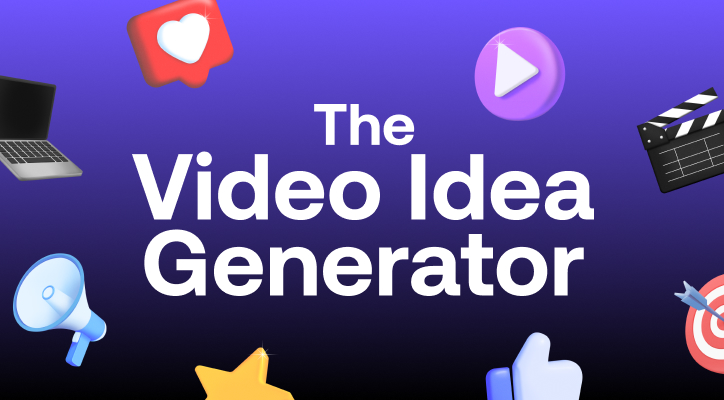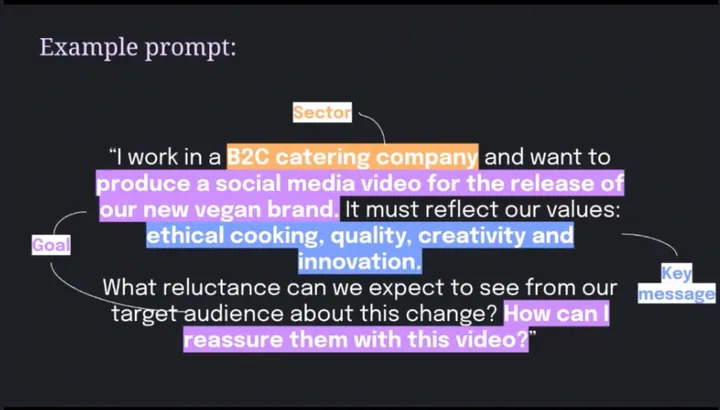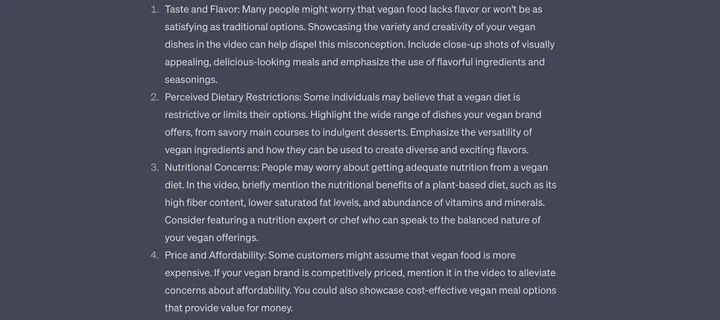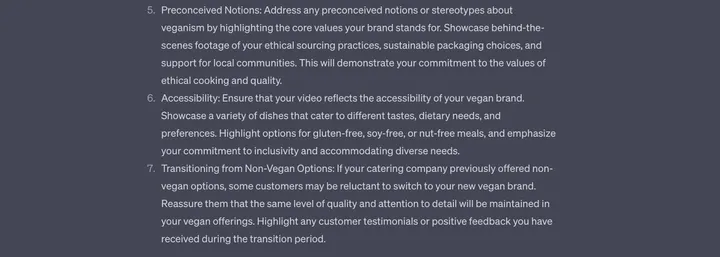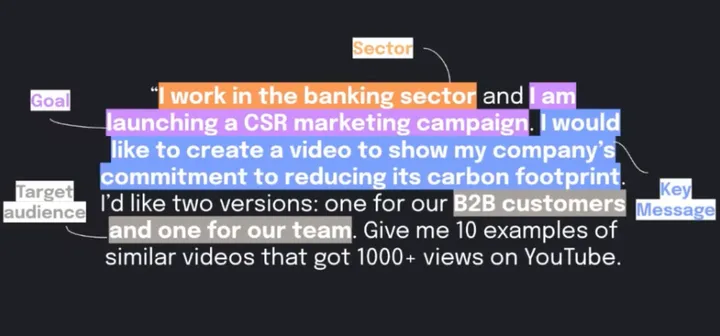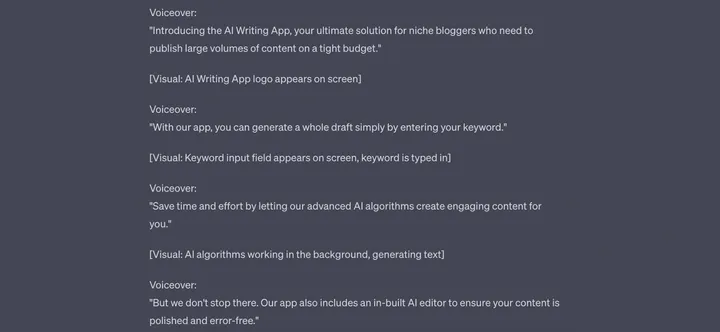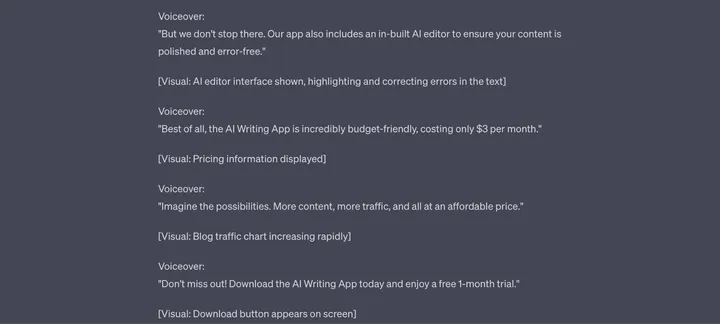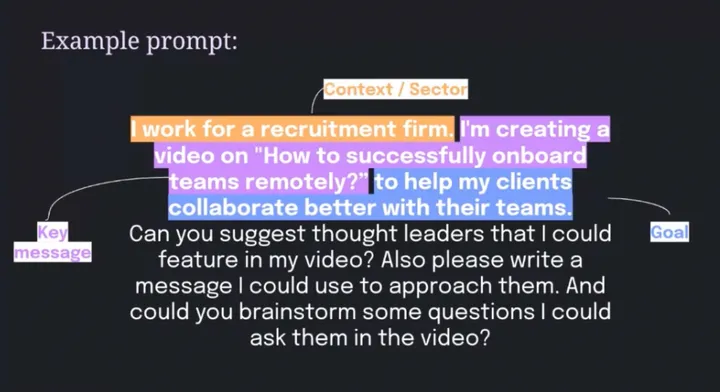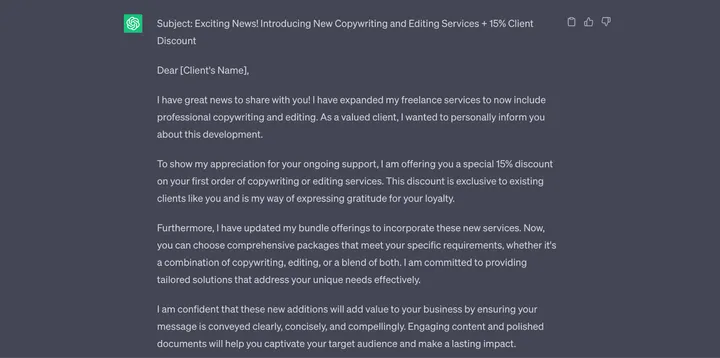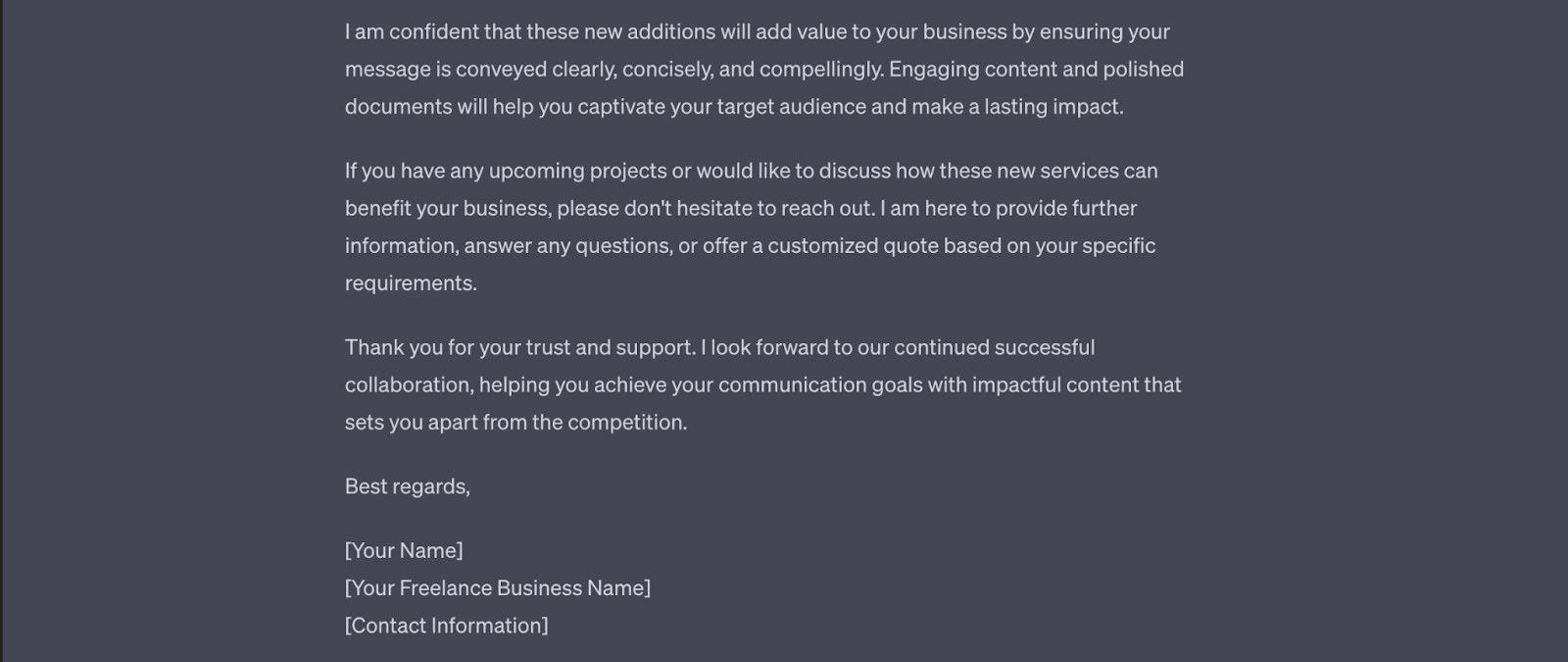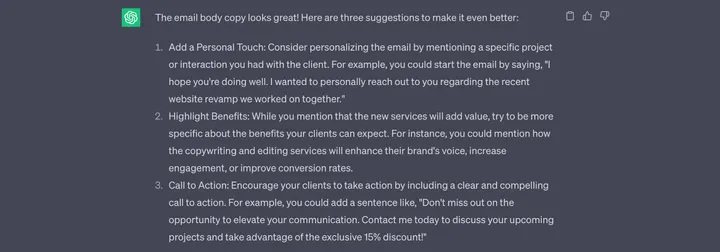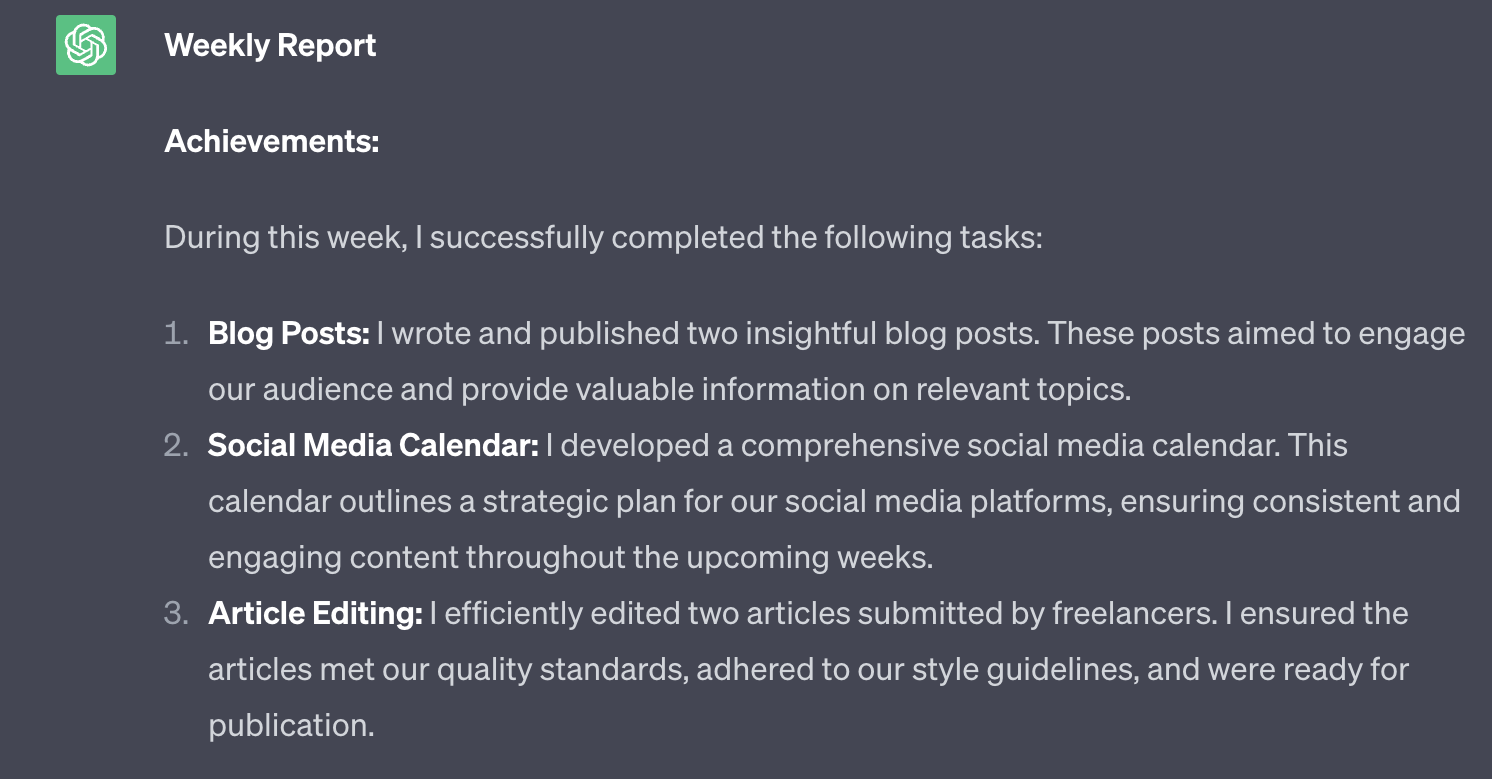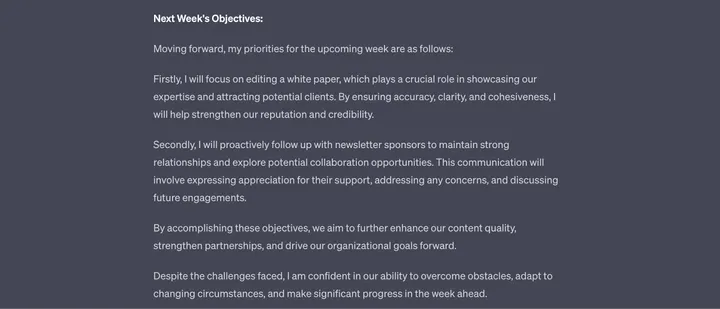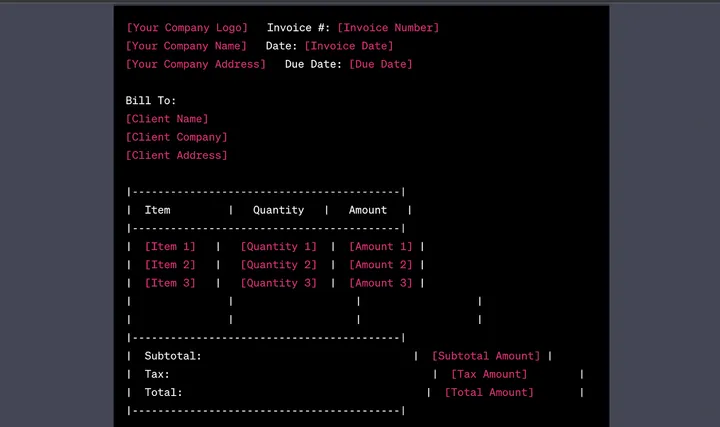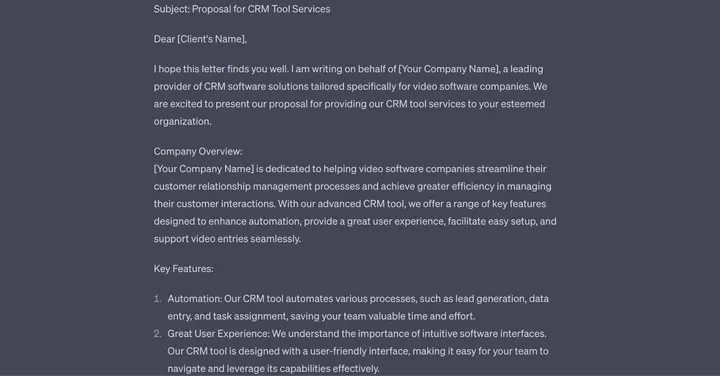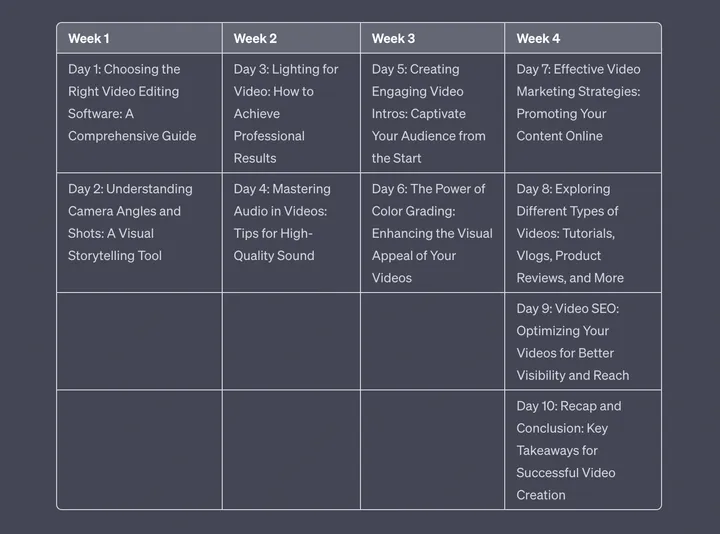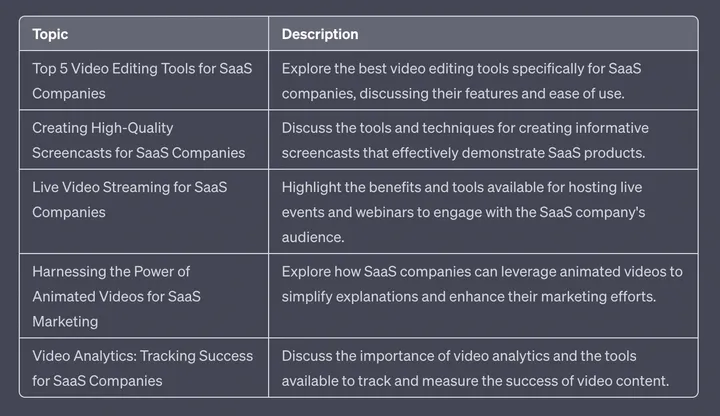Newsflash: The robots can help run your business!
Don't believe us? Ask Jackson Fall who is building a profitable business from scratch with GPT-4. Or the small business owner powering his entire workflow using the free GPT version of the chat bot.
Now, the point isn't to convince you to replace your human workers with ChatGPT — that's the wrong move. Instead, it is to show you what's possible when humans and AI come together to unlock a new level of efficiency and creativity.
Learning how to use a platform like ChatGPT can be complex for users on their first try. Keep reading to learn how to use ChatGPT to automate tasks, speed up execution and become more efficient. Or watch our ChatGPT webinar replay, where we discuss how to use the AI tool as your video strategy sidekick.
Luckily, there are many ways you can use the tool to boost your marketing efficiency. Here are the top 12 ways you can use ChatGPT whether it’s for video content creation, business operations, or simple content creation for your business.
For video content creation
Nearly 87% of consumers want more videos from brands to facilitate their learning of what they have to offer. But creating high-quality videos at scale can be challenging — you spend a lot of resources researching and learning about your audience, writing scripts, and recording and editing video clips.
ChatGPT might not be able to help with the actual video creation — PlayPlay can handle that for you. Indeed, PlayPlay empowers you to easily create marketing videos that resonate with your audience.
But ChatGPT can significantly speed up your learning, research, and scripting processes, among other parts of your content generation process.
Webinar Replay: Scale Your Video Marketing Strategy with ChatGPT
Discover how teams are integrating ChatGPT into their video strategies to boost efficiency & engagement at our on-demand webinar replay.
Watch Webinar Replay 1. Audience research
Use ChatGPT to quickly gather information about your target audience — such as their location, age, income level, and behavioral biases. Data like this helps you create high-quality video campaigns that convince your target audience to buy from you.
A good audience research prompt contains three critical pieces of information:
- Business context: What your brand does.
- The key message of your video campaign: What your video campaign focuses on.
- Your research goals or objectives: The specific information you require from ChatGPT.
Let’s say you’re a B2C catering service planning a video launch campaign for your new vegan brand. And you have questions about what your target audience's objections are that might discourage them from purchasing your product. In that case, you can input the following prompt into ChatGPT to gather relevant insights:
“I work in a B2C catering company and want to produce a social media video for the release of our new vegan brand. The video must reflect our values: ethical cooking, quality, creativity, and innovation.
What reluctance can we expect from our target audience about this change, and how can we reassure them with this video?”
Here’s ChatGPT’s response:
You’ll notice that ChatGPT lists the blockers and shares ideas for addressing each one – the variety of ideas provided can be turned into multiple mini video clips, meaning just like that you come out with a bank of video ideas. For example, to address concerns around limited dietary options, ChatGPT suggests highlighting the range of ingredients used in preparing the vegan diet in the video campaign. Incorporate these ideas into your video script to improve its overall quality.
2. Competitor research
ChatGPT can help you quickly gather data about industry trends and successful video campaigns in your niche. Say you discover that videos with high engagement rates are thirty seconds long; you’ll know to use the same timeframe for your video.
Tailor your competitor research prompt to one data request at a time. This way, the AI tool can provide exhaustive information about the subject at hand instead of lumping different pieces of information together.
For instance, don’t ask ChatGPT to provide a list of video campaigns with the highest engagement, views, and clicks on YouTube, Twitter, and LinkedIn. Instead, ask something like this:
“I work in the banking sector, and I’m launching a CSR marketing campaign. I want to create a video showing my company’s commitment to reducing its carbon footprint.
I’d like two versions: One for our B2B customers and one for our team. Give me ten examples of similar videos with 1,000 views on YouTube."
The prompt above is specific, straight to the point, and contains enough contextual data for ChatGPT to provide relevant output.
3. Video scripting
Scripting a creative video that appeals to your target audience’s needs and achieves your brand goals simultaneously is difficult — which is where ChatGPT comes in. It will help you overcome writer’s block and develop a solid direction for your video scripts.
ChatGPT isn’t human. To get a good draft, you need to provide the tool with enough information about your brand, target audience, and the purpose of the video. You can take creative things up a notch by specifying the structure of your script to ChatGPT to help it generate the first draft. Overall, the more specific your prompts are, the better your ChatGPT prompt output.
Say you just launched a new AI writing application, and you want an explainer video showing how it works; your prompt might look like this:
“I want you to create a high-quality promotional video script for my new AI writing app using this information:
Brand name: AI Writing App
Target audience: Niche bloggers who need to publish large volumes of content but cannot afford to hire writers.
Key message: The app is budget-friendly and costs only $3 monthly. You can generate a whole draft from your keyword. It also has an in-built AI editor to review the content.
Call to action: Download the app and enjoy a free 1-month trial.
Video length: 30 seconds
Video type: Voiceover
Tone of voice: Relaxed and convincing
Please structure the script as follows:
1. Introduction
2. Main content (covering key messages)
3. Conclusion (including the call to action)
Based on this prompt, ChatGPT delivers the following script:
The draft is far from perfect, so make sure to add some on-brand sparkle and human touch with your edits. Nevertheless, we can all agree that ChatGPT has reduced the time a customer would have to spend on creating a script from scratch.

Use AI for your video creation process
4. Content planning
ChatGPT can help you come up with strategy and execution ideas for your video campaigns. Say you're putting together a list of videocast guests; you can prompt ChatGPT to discover people who fit your ideal guest profile quickly.
Watch our webinar replay to discover more use cases for ChatGPT and video content creation.
For business operations
Other than supporting your video strategy – ChatGPT can speed up routine administrative business tasks such as:
5. Email drafts
If you don’t want to spend time personalizing generic email templates, you can use ChatGPT to create unique emails from scratch quickly. For this, you’ll need to input hyper-specific prompts that explain your email context — as this information isn’t available in ChatGPT’s data pool.
Say you want to write an email telling your client that you are offering new services; your prompts might look like this:
“I recently added new services to my freelance offering. Write an email informing my existing clients of this development. Include the following information:
- I now provide copywriting and editing services
- As existing clients, they get a 15% discount on their first order
- I have updated my bundle offerings to include these new services."
Here’s the GPT chat bot’s output:
If you already have a body copy for your email, you can ask ChatGPT to develop some of the best subject line options or even proofread your email to make it the best possible version. Here are examples of questions for both uses cases:
“Prompt A: I am giving you an email body copy. I want you to come up with five ideas for a subject line. Each subject line should be 7– 10 words. Do you understand?“
“Prompt B: I am giving you an email body copy. I want you to tell me three things I need to do to make it better. Do you understand?“
6. Writing weekly reports
Report writing is a tedious but necessary task. Outsourcing it to a GPT tool frees up time for you to focus on the hands-on aspect of your job, like strategy planning, marketing, and customer management.
All you need to do is input your job achievements and challenges in a specific week, and ChatGPT will do the rest of the job for you. Here’s a sample text to feed any GPT version of the chat bot:
“I am giving you a list of what I accomplished this week and the challenges I faced. Use these pieces of information to write my report:
Achievements:
- Wrote two blog posts and turned them into videos
- Created a social media calendar
- Edited two articles from freelancers
Challenges:
- No feedback from the newsletters for content distribution
- The website backend is down
To-do for next week:
- Edit white paper
- Follow up with newsletter sponsors”
Here’s ChatGPT’s response to this specific prompt:
7. Workflow automation
You can connect ChatGPT to your business apps like Google Docs and Microsoft Teams to automate tasks right in these apps and become more efficient.
Say you want to connect Google Docs with ChatGPT; all you need to do is:
- Install the GPT for Sheets and Docs add-on from the Google Workspace Marketplace.
- Get your OpenAI API key from the OpenAI dashboard.
- In a Google Doc, go to Extensions > GPT for Sheets and Docs > Set up API key.
- Enter your OpenAI API key and click Save.
- To enable ChatGPT, go to Extensions > GPT for Sheets and Docs > Launch sidebar.
Once ChatGPT is enabled, enter prompts in the sidebar or document to start prompting ChatGPT from Google Docs. For instance, ask ChatGPT to:
- Generate ideas for your writing: Enter something like "What are some interesting topics to write about?" and ChatGPT will generate a list of ideas for what you can talk about. Or ask the tool to create an outline for your topic.
- Get help with grammar and spelling: Highlight a section of text and click on the ChatGPT button in the toolbar. ChatGPT will suggest grammar and spelling corrections.
- Translate text: Select a section of text and click on the ChatGPT button in the toolbar. ChatGPT will translate the text into a different language.
This is just one creative example of many ChatGPT plug-in automations available. Nowadays, the tool is available as a plug-in for many business tools. So don’t be afraid to test use and test it!
8. Creating proposal and invoice templates
Instead of downloading generic proposal and invoice templates, ask ChatGPT to create custom, creative templates for your brand. Authorized team members can use these creative templates to respond to client requests in your absence — maintaining consistency within brand communications.
Here are sample texts for these use cases:
“Prompt A: Create an invoice template for a B2B SaaS company.”
“Prompt B: I work for a CRM tool for video software companies. Create a proposal template I can use to pitch my services. Include the following information:
- Company name: CRM software
- Key features: Automation, excellent user experience, easy to set up, and video entries
- Price: $15 per month; free for the first month”
You cannot use these templates as they are. You must tweak them to match your brand image and overall presentation.
For content creation
Beyond streamlining your processes and supporting video creation, ChatGPT can also speed up tasks throughout your content creation process.
9. Create content calendars
Don't have time to organize your topics into a standard publishing schedule? Use ChatGPT to create a simple content calendar in a few seconds. You can tweak this to match your team bandwidth, resources, and questions — but at least you won't start from a blank page.
“Prompt: I'm giving you a list of blog topics. I want you to organize them into a 4-week content calendar.”
10. Brainstorm ideas
ChatGPT can serve as your ideation sparring partner and help you come up with engaging content ideas for videos, blog posts, podcasts, and social media content.
Say you want to come up with clusters topic ideas for a particular content hub that targets the right customer; you might input prompts such as the following one into the GPT tool:
“I want to write five blog posts about video content creation tools for SaaS companies. Can you give me five topics I can write about?”
11. Create first drafts
ChatGPT can help you flesh out topic ideas into coherent first drafts to fit your target customer’s needs or preferences. This doesn't eliminate the need for a writer, as you still need them to fact-check and thoroughly edit ChatGPT’s output. But it significantly speeds up content writing and helps you publish articles faster.
There are two main approaches to writing articles with ChatGPT:
- Input your topic and ask the tool to generate an outline from it > Edit the outline, then ask the tool to create a blog post.
- Input a human-written outline and ask ChatGPT to write a blog post using it.
Notice we didn't ask ChatGPT to create a blog post from a mere topic? This is because ChatGPT easily goes out of scope when asked to create a long-form blog post from only a topic — and its output is much more difficult to edit and far from the best one that it could provide for your target customer.
12. Edit and proofread content
ChatGPT can act as a virtual editor or proofreader — improving your content flow and structure. But you have to guide the tool thoroughly to get optimal responses.
Guide ChatGPT by specifying the editing task you’ll like the tool to carry out for you. For instance, your prompt might look like this:
“I'm giving you a long-form article. Please review the text for grammar, spelling, and sentence structure errors, and suggest improvements.”
Next, copy and paste your text into the input bar and let the AI tool suggest changes. Don't implement all of these changes as they are — remember, ChatGPT cannot understand the nuance of your article as well as a human can. Carefully review the AI’s suggestions to ensure they improve your users’ content's quality and overall readability before implementing them.
Read our AI for marketing article to see how experienced marketers use ChatGPT for content creation.
5 tips for improving ChatGPT’s output quality
ChatGPT is a robot, and its output will never be as good as what an experienced knowledge worker creates. Nevertheless, there are several things you can do to ensure that the tool's output is good enough to serve as a starting point for your tasks:
- Include relevant background information about the task and be as specific as possible to receive responses that match what your GPT output objective is.
- Use the right action words. Don't say “list” when you want ChatGPT to give you responses that explain concepts.
- Don't give up. Chances are ChatGPT’s initial output will not be good enough. When that happens, add more context and try again.
- Always check the quality of ChatGPT’s feedback and the credibility of its information — the bot can be biased and be unable to deliver the best responses.
- Be careful about what you provide as sensitive data to ChatGPT as it will store it in its database, making your data vulnerable. Use specific text that provides context without divulging sensitive data like passwords and unannounced product information.
Want to learn more about crafting great ChatGPT prompts that give you workable drafts on the first try?
Watch our webinar for tips on using ChatGPT to scale your video strategy and your business.
Watch Webinar Replay Create engaging AI-generated videos with PlayPlay
PlayPlay is an example of a video creation software that makes it easy for anyone to create high-quality, professional videos in a fraction of the time and cost that video production agencies typically require.
Best of all, you don’t have to start from scratch! You can either choose to edit one of our customizable templates or let PlayPlay’s AI Assistant model help you generate video drafts for your company, so you can share your video as quickly as possible without having to spend as much time producing it!
PlayPlay’s AI video assistant allows any team member to accelerate their video creation process with an AI-powered tool that instantly generates video drafts from text prompts. Easily edit and customize these drafts to align with your brand’s style and produce polished, high-quality videos.
ChatGPT is mainly utilized for language understanding and generation, making it useful for tasks such as content creation, language text translation, and more. Its applications are diverse and largely determined by how each user decides to leverage it.
ChatGPT is a sophisticated AI language model created by OpenAI, designed to understand and generate human-like text based on the input provided. It’s a versatile chat tool for professionals and users alike by assisting them with tasks such as brainstorming ideas, drafting emails, and analyzing data.
ChatGPT has two GPT versions: a free model and a paid model. The Free-tier GPT version allows users to enjoy a wide range of features powered by the platform. Free-tier GPT users can also browse the web to retrieve up-to-date information on their chat.
Tips for setting effective rules when using ChatGPT:
- Set a word or sentence limit. For example, tell the ChatGPT model to “provide an explanation in 150 words or less”
- Specify the tone or formality of your requested responses. For example, you can indicate whether the response should be formal, casual, technical, etc.
- Define focus areas, so that the ChatGPT model has a better shot at highlighting the specific points you wish to develop, or to avoid certain details when answering your prompt.

